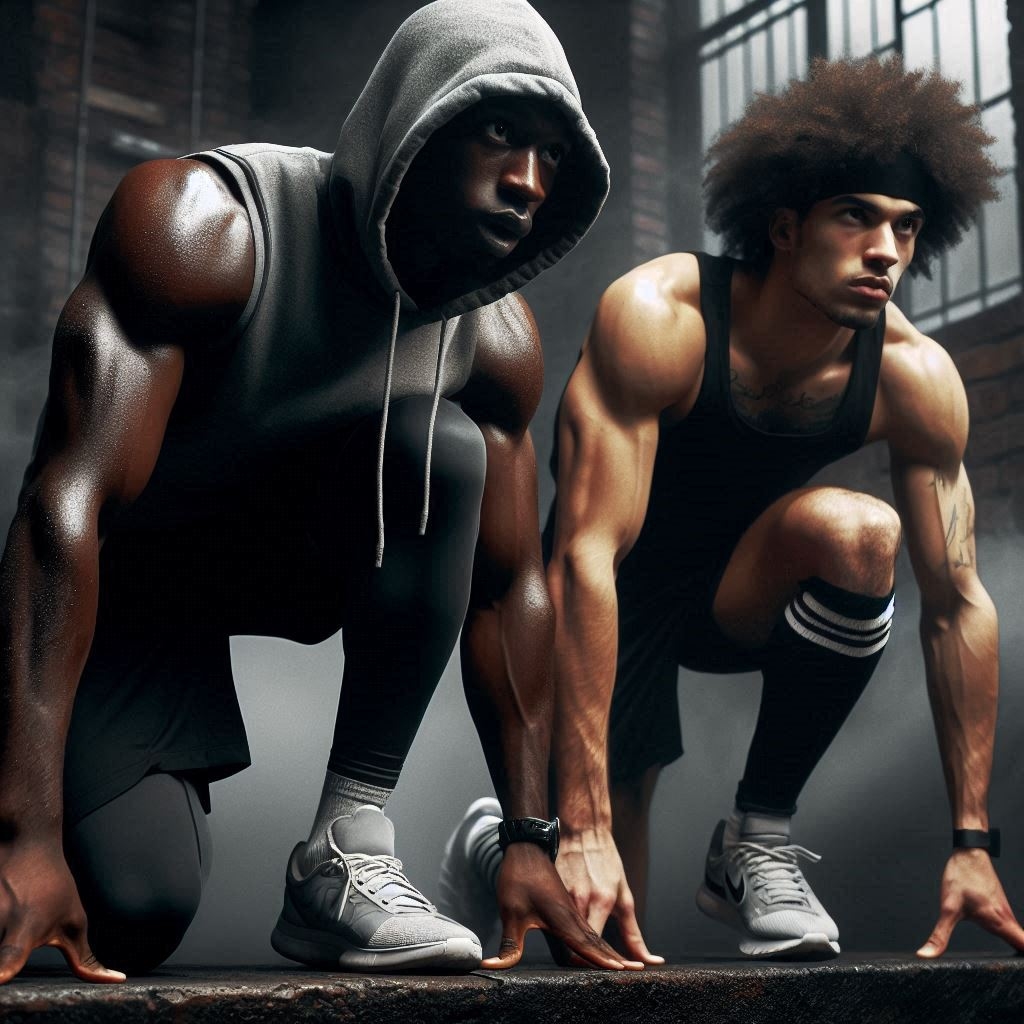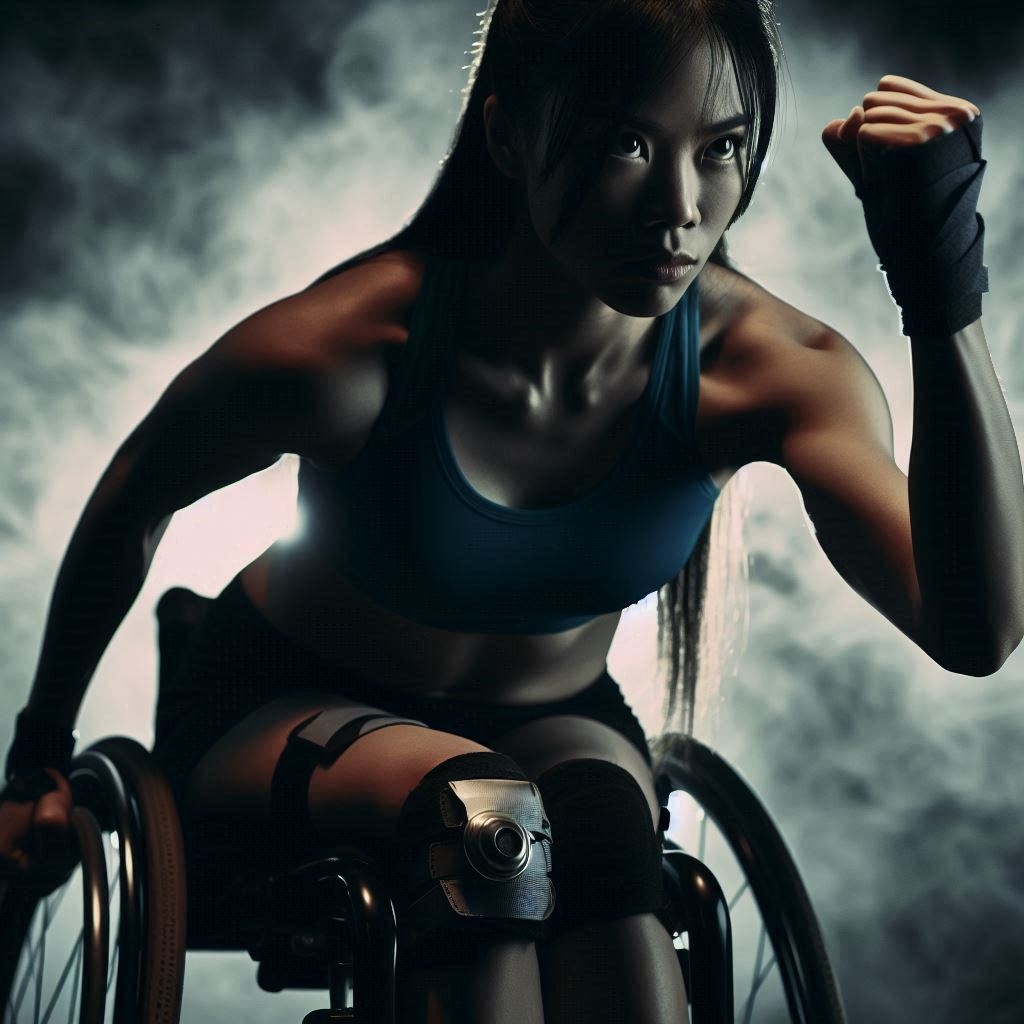Training Like a Pro – Fitness Secrets from Top Athletes Across Sports
This guide and information is for everyone — no matter your age, background, or starting point.
Whether you’re chasing a personal best, recovering from injury, or simply seeking that spark again, the mindset and methods of elite athletes offer far more than performance gains — they hold the key to long-term physical and emotional vitality. Here’s how to channel their routines into your own daily practice.
Periodization — Training in Cycles
Top athletes don’t train hard all the time. They break the year into distinct phases:
- Preparation Phase: Build general fitness and lay the foundation
- Competition Phase: Peak for performance and manage stress
- Transition Phase: Active rest and recovery for the body and mind
For everyday athletes, this prevents burnout and allows for progress even during busy or low-motivation seasons.

The Psychology of Performance
Elite athletes use cognitive tools to stay sharp and resilient:
- Visualization, journaling, and goal-setting for mental clarity
- Reframing setbacks as fuel, not failure
- Strategic rest not just for muscles, but motivation
Your mental game is your physical game — and nurturing it leads to better habits, better outcomes.
Recovery Is Training
Professional programs treat rest like a workout:
- Sleep hygiene is monitored like heart rate
- Nutrition timing supports repair, not just performance
- Ice baths, massages, and even naps are built into the schedule
For non-pros, honoring recovery (hydration, rest days, mobility work) yields deeper progress than relentless effort.
Fueling for Strength
Athletes fuel based on output and biofeedback — not marketing trends.
- Carbs around training windows for sustained energy
- Protein spaced evenly for muscle repair
- Fats to stabilize hormones and support joints
Learning your rhythm matters most. Logging intake and how you feel may reveal patterns worth adjusting.

Mobility, Not Just Flexibility
Mobility — the ability to move through full ranges with control — separates athletes from exercisers.
- Daily joint prep (hips, shoulders, spine) prevents breakdown
- Movement drills (like CARS and 90/90s) unlock power and stability
- Static stretching takes a backseat to dynamic recovery
Even five minutes daily adds up over months — mobility is a longevity investment.
Why Training and Recovery Apply to Everyone
From Youth Athletes to Seniors — No One’s Exempt from the Demands of Sport
Elite training principles aren’t reserved for professionals — and injuries, burnout, and breakthroughs don’t discriminate. Across every level, identity, and age group, athletes face similar physiological challenges and emotional cycles.
- Kids & Youth Athletes
- Growth spurts affect coordination and recovery
- Poor form or overtraining can cause lasting joint issues if not addressed early
- Building good sleep, hydration, and movement habits now sets lifelong foundations
- Teens & Young Adults
- Hormonal changes impact performance, energy, and emotional regulation
- Peer pressure and identity development often mix with sport expectations
- Mental conditioning becomes a key differentiator as competition ramps up
- Adults & Weekend Warriors
- Balancing work, life, and fitness can lead to inconsistent habits
- Recovery becomes more essential as natural repair slows
- Proper programming can reignite passion and prevent chronic strain
- Seniors & Masters Athletes
- Training smart helps maintain bone density, muscle tone, and balance
- Recovery routines reduce injury risk and support independence
- Sport becomes more than competition — it’s about connection and vitality
- Female Athletes
- Menstrual cycles, hormonal fluctuations, and energy availability shape performance
- Gear design, coaching language, and opportunity access must be tailored respectfully
- Female-led teams often outperform when recovery, psychology, and peer support are prioritized
- LGBTQ+ Athletes
- Inclusive spaces matter — both physically and emotionally
- Representation and affirmation improve access, performance, and retention
- Training is universal, but identity-aware coaching fosters deeper impact
- Professional Athletes
- Higher stakes mean tighter training cycles, stricter protocols, and constant scrutiny
- Mental resilience and recovery science are woven into every decision
- Success is often defined not by physicality alone, but by the capacity to adapt
- Non-Professional & Recreational Athletes
- Internal motivation drives purpose and consistency
- Lack of access to expert coaching means education is vital
- Respecting your body’s signals builds confidence and longevity — not just performance
Bottom line: Whether you’re a child learning the basics, a senior staying agile, or anyone in between — male, female, nonbinary, LGBTQ+, elite or amateur — your body deserves care. And your goals deserve respect. Sport is a shared human experience, not a privilege or identity gate.

What You Can Do Today
Start like a pro — no contract required:
- Track one variable (sleep, hydration, mood) for a week
- Add five minutes of mobility to your morning or wind-down
- Reframe “off days” as essential training steps
- Seek stories of athletes outside your demographic — find your reflection in theirs
Starting Anytime — Why There’s No Perfect Moment
Training Isn’t Reserved for the Young, the Fit, or the Experienced
Sport isn’t a destination — it’s a doorway. And the door never closes.
Whether you’re 15 or 65, starting a new training journey comes with its own set of superpowers:
- Fresh perspective often means fewer bad habits and more openness to learning
- Late starters tend to listen more deeply to their bodies, respecting progress and limits
- Beginner gains — the rapid improvements that come with early consistency — build momentum and confidence
- Age brings wisdom, patience, and purpose to training that many younger athletes grow into later
- You define the stakes — not medals or rankings, but personal meaning, health, and growth
There is no “too late” — there is only “when you’re ready.” And readiness can look like curiosity, courage, boredom, burnout, inspiration, or a hunch that you deserve better. If that’s where you are — it’s already a perfect time.
Training Is for Everyone — Every Body, Every Age, Every Beginning
Training isn’t just something you do. It’s something you become part of. Whether you’re chasing medals, momentum, or meaning, sport meets you where you are. Fitness isn’t reserved for the young, the elite, or the already-fit — it’s an invitation to begin. And to begin again.
There’s No Perfect Moment
Forget timelines. Forget comparisons. You can start at 16, 46, or 76 — and what unfolds from that moment is entirely yours. Because starting is the magic word.
- Beginner gains bring fast improvements early on, energizing your commitment
- Late starters often develop deeper body awareness and make more sustainable progress
- You choose the stakes — whether it’s reclaiming your health, rediscovering joy, or redefining your limits
Momentum begins with one honest decision: to care. To show up. To try.
Starting Late Isn’t a Disadvantage — It’s a Perspective
Older athletes bring patience, insight, and purpose to training. They tend to listen to their bodies, respect their limits, and train with intention. Progress isn’t just physical — it’s mental, emotional, and relational.
If you’ve spent decades thinking “sport isn’t for me,” you’re not alone. But you’re not stuck. You can rewrite that script. All it takes is one imperfect beginning, and the willingness to see yourself differently.
Training Is Identity Work
It’s not just reps and routines — it’s a reclamation. It’s asking what your body deserves, what your life can feel like, and who you want to become. Sport is a place to be seen, to be strong, and to be real.
Whether you’re returning after injury, exploring a new sport post-parenthood, or finally carving space for yourself — the impulse matters. That instinct to move, to grow, to be more — that’s your signal. Follow it.

Nobody Has to “Qualify” for Belonging
There’s no entry exam. No speed test. No ideal body type. You are already enough to start.
If you’re tired of waiting for the right moment, or the right motivation, or the right size — consider this permission to begin anyway.
You deserve a place in this story. In this gym. On that trail. In your own corner of progress.
Conclusion
Train Like You Belong
Performance isn’t owned by professionals — it’s practiced by anyone willing to learn, listen, and evolve. Whether you’re working toward your first mile or your next medal, what matters isn’t where you start — it’s that you start at all.
Strength is personal. Recovery is strategy. And sport, at its best, is radical self-respect.
Join the discussion: What lessons have you borrowed from pro athletes, and how have they shaped your own journey?
Tag your thoughts, routines, and comebacks with: #TrainLikeAPro #EveryBodyStrong #RecoveryIsTraining #InclusiveAthlete #MindfulMovement #StrengthInAll


